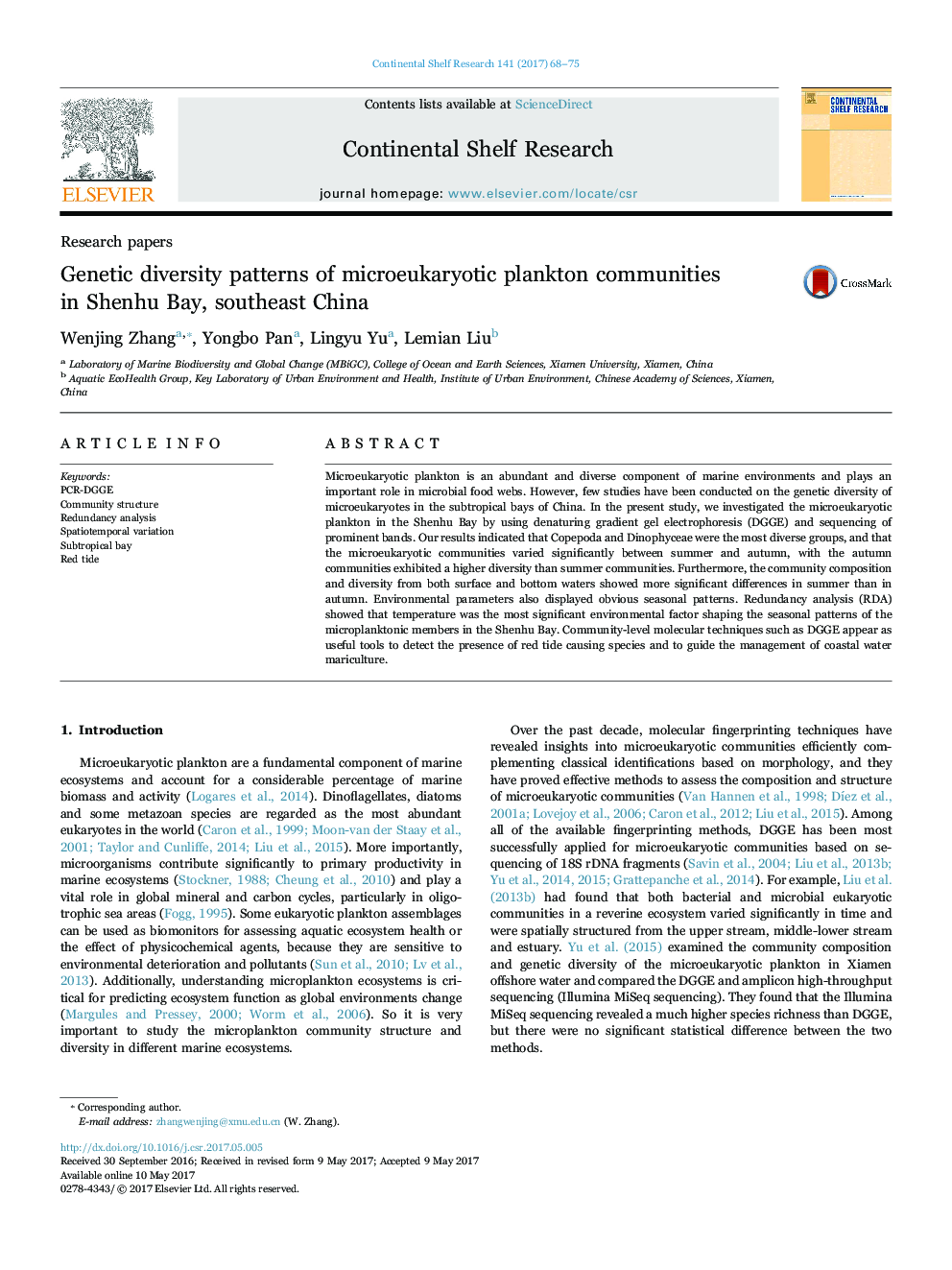| Article ID | Journal | Published Year | Pages | File Type |
|---|---|---|---|---|
| 5764430 | Continental Shelf Research | 2017 | 8 Pages |
Abstract
Microeukaryotic plankton is an abundant and diverse component of marine environments and plays an important role in microbial food webs. However, few studies have been conducted on the genetic diversity of microeukaryotes in the subtropical bays of China. In the present study, we investigated the microeukaryotic plankton in the Shenhu Bay by using denaturing gradient gel electrophoresis (DGGE) and sequencing of prominent bands. Our results indicated that Copepoda and Dinophyceae were the most diverse groups, and that the microeukaryotic communities varied significantly between summer and autumn, with the autumn communities exhibited a higher diversity than summer communities. Furthermore, the community composition and diversity from both surface and bottom waters showed more significant differences in summer than in autumn. Environmental parameters also displayed obvious seasonal patterns. Redundancy analysis (RDA) showed that temperature was the most significant environmental factor shaping the seasonal patterns of the microplanktonic members in the Shenhu Bay. Community-level molecular techniques such as DGGE appear as useful tools to detect the presence of red tide causing species and to guide the management of coastal water mariculture.
Related Topics
Physical Sciences and Engineering
Earth and Planetary Sciences
Geology
Authors
Wenjing Zhang, Yongbo Pan, Lingyu Yu, Lemian Liu,
